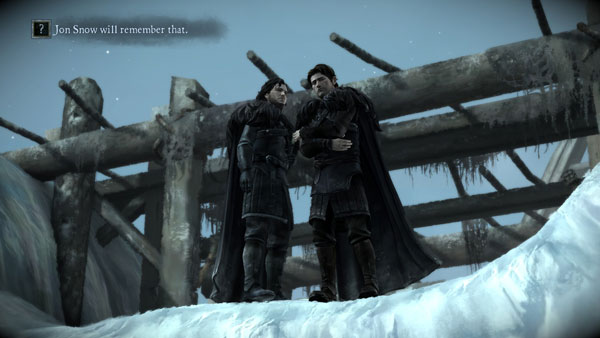
This has been my least favorite of the Telltale Choose Your Own Adventure style adventures. I think my main problem with it was the multiple character story lines. Jumping from character to character may be in the spirit of the books, but I felt like it diminished the feeling that I was actually a part of the world. Also, as a fan of the books and show, it was a little strange to be playing out this non-canonical story. It was like playing a Transformers game as a Go-Bot.
However, like all of the recent Telltale games, it managed to grab my attention (eventually) and I stuck with it all the way to the unhappy ending(s).

For years I have heard about the cult status of this movie and I could have sworn I have seen it before. But I think this is just one of those cases where I had seen enough clips to have gotten the feeling what the movie is all about without having seen it in its entirety (reminding myself what movies I’ve seen is one of the main reasons I list films here… lord know we don’t need more Web movie reviews by hacks like me). Well, thanks to the internet I’ve seen it from start to finish, and yes, it’s true, this is a dumb yet thoroughly entertaining monster movie about giant killer worm things.

Michelle Yeoh and Cynthia Rothrock’s debut film is corny and very dated but it was everything I expected (meaning, not much).
UPDATE: I was tricked into re-watching this under the title In the Line of Duty II (Also called Yes, Madam!) it’s better than I originally reported. Still stupid, but the fights are very well done.

The Sniper franchise is all about stealth, planning and quick moments of anatomically correct violence. The previous game in the series was good, but it didn’t quite click with me the way three has. If my memory can be trusted, I feel like the biggest difference here is that there is now a much more open level design. The sneaking around feels like you are in control rather than being guided on rails. As before, the x-ray vision kill shots are an unnecessary but effective gimmick. There is a story about some sort of super weapon but, whatever. It’s completely forgettable. The game’s mechanics are real highlight here, and I now am excited to play IV when it comes out (just no more desert levels please… this ain’t Serious Sam).

Apparently, The Mermaid was the highest grossing movie in China last year. The 40 different conglomerates listed in the opening credits who produced this film must be happy. Well, good for Stephen Chow. He knows how to create a fun and exciting movie and this is no exception. The CGI effects, as usual, are horrible. It’s like the animators never learned how gravity worked back in middle school. Characters fly in improbable arcs that look more like After Effects animations rather than 3-D. Someone give this man a Hollywood-quality production team next time, he deserves it.

Bleh, these super hero movies need to end. While can’t say I was bored by Ant-Man, it just felt ho-hum to me. All these origin stories feel the same. The action is forgettable and the whole telepathic connection to ants thing just ruined the interesting concept of a shrinking man going after baddies. Oh, and the references to the Marvel universe were completely out of place.

This early version of The Maltese Falcon is played as a comedy. The basics of the story are still there (it’s now a jewel filled horn instead of a bird statuette) and some of the changes are pretty good: casting Alison Skipworth as the ringleader and making Wilbur a dopey cartoon thug. But old-timey comedy rarely holds up and, in this case, it can be a bit squirmy as the main character flirts with women a third his age. That said, I think I like it better than the 1931 version.

Fantastic Thai martial arts movie about a monk’s apprentice going to the big city to retrieve his small village’s stolen Buddha head. Of course he get involved with gangsters, gamblers and underground fighting. The fights are have a very real feel to them despite the acrobatic choreography and insane jumping skills of Tony Jaa. The main characters are likable and it’s really the sidekick George who steals the show when fists aren’t flying.

Having seen the horrible Fight back to School I wasn’t expecting much from this early Stephen Chow comedy. This one at least knows it’s a comedy. There are a few good comic moments, but Chow’s character is genuinely unlikable (like say, Ace Ventura) and, for the most part, Tricky Brains feels like it was written by an eight-year-old with no understanding of how adults behave. It could also be that a lot is lost in translation.

This early version of the Hammet novel hits most of the same plot points of the later version but the acting is corny and there’s a lack of any visual flare to the direction. The story is still good and there is a plot hole that’s filled out in this version (a witness to the crime is the key piece evidence which seems to have been added completely as an afterthought)



